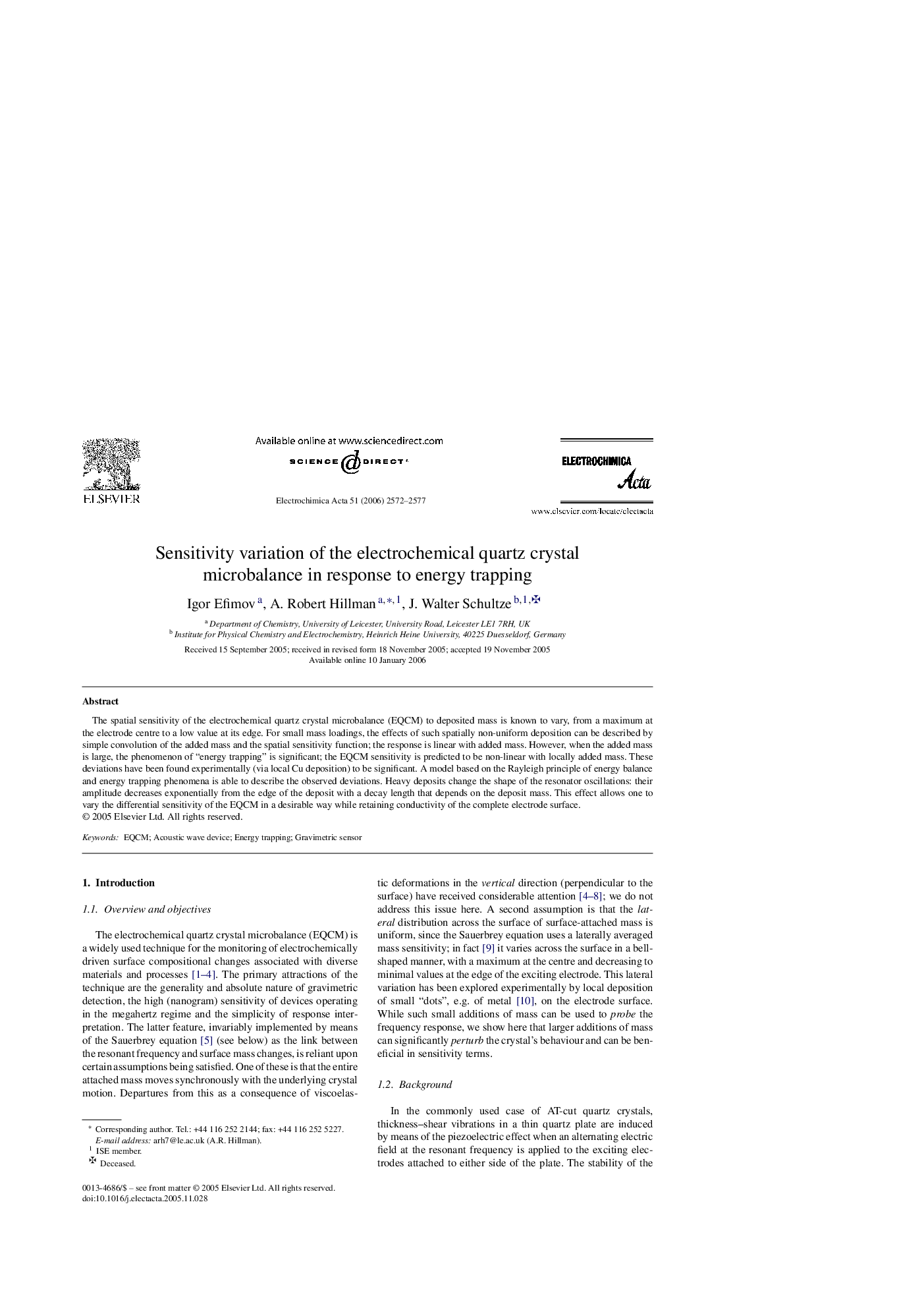| کد مقاله | کد نشریه | سال انتشار | مقاله انگلیسی | نسخه تمام متن |
|---|---|---|---|---|
| 195437 | 459813 | 2006 | 6 صفحه PDF | دانلود رایگان |

The spatial sensitivity of the electrochemical quartz crystal microbalance (EQCM) to deposited mass is known to vary, from a maximum at the electrode centre to a low value at its edge. For small mass loadings, the effects of such spatially non-uniform deposition can be described by simple convolution of the added mass and the spatial sensitivity function; the response is linear with added mass. However, when the added mass is large, the phenomenon of “energy trapping” is significant; the EQCM sensitivity is predicted to be non-linear with locally added mass. These deviations have been found experimentally (via local Cu deposition) to be significant. A model based on the Rayleigh principle of energy balance and energy trapping phenomena is able to describe the observed deviations. Heavy deposits change the shape of the resonator oscillations: their amplitude decreases exponentially from the edge of the deposit with a decay length that depends on the deposit mass. This effect allows one to vary the differential sensitivity of the EQCM in a desirable way while retaining conductivity of the complete electrode surface.
Journal: Electrochimica Acta - Volume 51, Issue 12, 25 February 2006, Pages 2572–2577